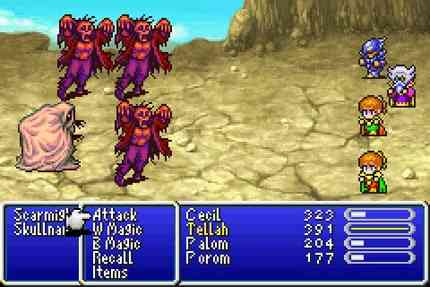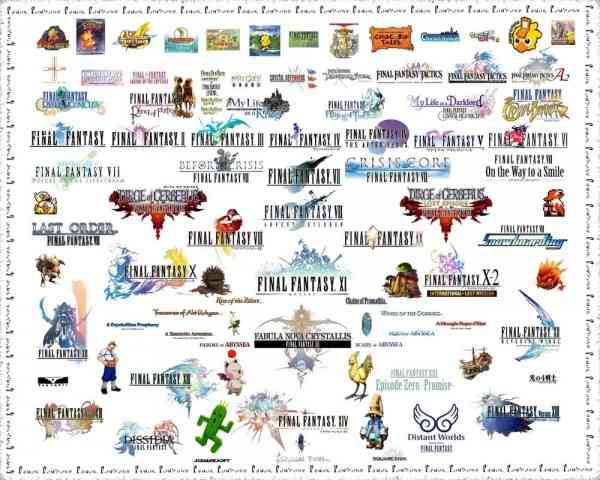The History Behind The JRPG Heavyweight Champ!
Welcome to part 2 of The RetroReview Series’ debut article, covering Final Fantasy VII. Don’t forget to check out part 1 ‘The Intro‘ and move onto part 3 ‘The Review‘!
The Final Fantasy series began in Japan, in 1987, with the release of (the ironically titled) Final Fantasy. The game was created to capitalize on the success of the then popular RPG franchise Dragon Quest (released in North America in 1990 for the NES as Dragon Warrior). Dragon Quest was the original console RPG, the original JRPG, the original turn-based RPG… whatever you wanna call it. It created the base formula for almost every classic JRPG, period. Final Fantasy was a beautiful, shining rip-off of that formula.

The original game was developed by Hironobu Sakaguchi, and published by Square (Co., Ltd). When Square became an independent company in 1986, Hironobu Sakaguchi was its Director of Planning and Development. After creating a total of 8 games (the only well-known of which is Rad Racer for the NES), Sakaguchi was going to create one final (Oh that’s where the title comes from!) game for Square. If that game didn’t succeed, Square would have gone under, and who knows what I would be doing right now. Dragon Quest was the popular game of the time in Japan, and wise decisions were made.
The Final Fantasy series is soon (hopefully next year) to come out with its 15th main series game. The franchise has sold over 110 million games worldwide and has expanded to 53 games with Final Fantasy in the title (yes, I counted this), plus several remakes, several games featuring Final Fantasy characters (Kingdom Hearts, Ehrgeiz, Chocobo’s Dungeon, Chocobo Racing, etc.), four MMO expansions, two CG animated films, and one anime series. Even though there are main series “numbered” games, they actually aren’t connected to each other, plot-wise. The games share gameplay mechanics, plot themes, minor characters, item names, music themes, and creative team members, but they’re not a sequence of plot-connected sequels. The first 3 Final Fantasy games don’t even really have plots (they just existed in ironic opposition to the betrayal The Neverending Story caused when the movie ended). It wasn’t until Final Fantasy IV, that we got a great story, something the series has since become known for.
Final Fantasy games II and III weren’t released in North America, until they eventually saw first time ports for the PS1 (in 2002) and Nintendo DS (in 2006) respectively. Final Fantasy IV was the first game in the franchise to be created for the Super Nintendo, and was the second Final Fantasy game to be released in North America. It was released as Final Fantasy II, had its difficulty dumbed down, had some minor references to Christianity removed (ex. the word “holy” was replaced with the word “white”), and language surrounding deaths of characters was changed, to lighten the tone. For some reason, Nintendo (whose console the games were released on) seemed to think North American audiences couldn’t handle aspects of Japanese gaming and often held back releases, or made game edits. For example, Super Mario Bros. 2 wasn’t released in North America, until Super Mario All-Stars came out for the SNES in 1993. That version of Super Mario Bros. 2 was retitled “The Lost Levels”. The Super Mario Bros. 2 we all know and love was called “Super Mario USA” in Japan.
_________________________________
“The franchise has sold over 110 million games worldwide and has expanded to 53 games with Final Fantasy in the title (yes, I counted this)…”
Even with the edits done to Final Fantasy IV, the game was a total money melon! It was fantastic! And not just for the story, Final Fantasy IV also introduced the Active Time Battle, or ATB, system. Before this combat system, most (J)RPGs had turn-based combat, which meant the enemy would attack, then you would attack (or cast a spell or use an item or run away or whatever), then the enemy would attack, and y’all would just keep taking turns. The ATB system had a meter that would climb after you did an action, and when that character’s meter filled, they could act again. You were constantly watching your characters’ meters, and having to frantically manage them, in a system that made RPG combat much more exciting.

Final Fantasy V… wasn’t released here. It was much more story-light than IV, but had an interesting job system, that allowed for deep customization of each of the player’s 4 characters. Instead of having lots of characters with their own unique powers, the player could choose different jobs for each character. For example, Bartz could be a Knight and a White Mage, and Faris could be a Thief and a Black Mage. It would be up to the player to choose what abilities they gained, and what equipment they used, based on their job choices. Final Fantasy VI was released in North America as Final Fantasy III, and has been argued by many as the best RPG (if not the best game) of all time. There will surely be a future RetroReview Series article about this game. And since we’re (finally) almost at Final Fantasy VII, here’s a speed breakdown of my thoughts on the games in the main series… over on page two!
